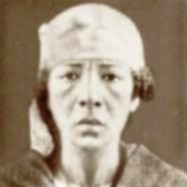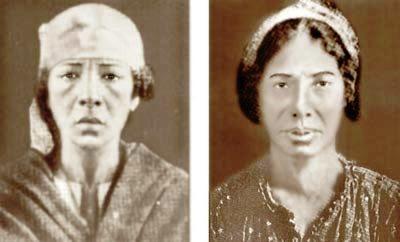
d: 1921
Sakina Ali Hammam
Summary
Name:
Years Active:
1919 - 1920Status:
ExecutedClass:
Serial KillerVictims:
17Method:
SuffocationDeath:
December 21, 1921Nationality:
Egypt
d: 1921
Sakina Ali Hammam
Summary: Serial Killer
Name:
Sakina Ali HammamStatus:
ExecutedVictims:
17Method:
SuffocationNationality:
EgyptDeath:
December 21, 1921Years Active:
1919 - 1920Date Convicted:
May 16, 1921bio
Sakina Ali Hammam was born around 1885 in Egypt, roughly a decade after her elder sister Raya. Raised in poverty and with limited access to education or employment, Sakina grew up in an environment marked by hardship and social instability.
During the early 20th century, Sakina and Raya left their birthplace and relocated to Alexandria, a major port city that was rapidly urbanizing and developing a reputation for its bustling markets, nightlife, and underground economy. By the 1910s, both sisters were involved in running brothels and facilitating prostitution, an industry that thrived in the urban underbelly of Alexandria but was fraught with danger and competition. Sakina married Mohamed Abd El‑‘Al, who became a central figure in their criminal operations.
Their financial situation grew increasingly dire after World War I, as Egypt’s economy suffered, and the cotton industry. With income from prostitution dwindling, the sisters began hiring teenage girls to work in their brothels. However, the rise of independent sex workers created competition they could not tolerate.
murder story
Sakina played a central role in one of the most infamous killing sprees in Egypt’s modern history. Alongside her sister Raya, their respective husbands, and two male accomplices, she helped orchestrate the murders of 17 women between 20 December 1919 and 12 November 1920 in the Labban district of Alexandria. The motive behind the killings was a calculated combination of financial greed and the desire to eliminate competition within the local sex trade.

At the time, Sakina and Raya operated brothels, but their business had begun to decline in the aftermath of World War I. Many of these women were known to carry cash and wear gold jewelry, making them profitable targets. With growing desperation and a network of trusted accomplices, the sisters developed a sinister plan to lure, murder, and rob these women.
Sakina and Raya would invite their intended victims to one of four rented homes scattered across Alexandria. These invitations were usually made under the pretense of socializing, drinking, or discussing work opportunities. Once inside, the victim was offered alcohol until she became intoxicated. This part of the plan was essential to lowering her guard and ensuring minimal resistance.
When the victim was no longer fully conscious, the four men, including Sakina’s husband, Mohamed Abd El-‘Al, would ambush her. Together, they held her down while suffocating her with a wet cloth pressed over her nose and mouth. This method of killing was chosen for its silence and lack of visible injuries, which helped the gang avoid immediate detection. After the victim died, Sakina and Raya removed any valuables, particularly jewelry and money, which they later sold to a local jeweler, Ali Hasan. The earnings were then split among the six perpetrators.
After each killing, the group would lift floor tiles in the home, dig a shallow grave, and bury the victim beneath the house. They would then restore the floor, hiding all evidence of the crime. This burial method was repeated in multiple locations, including one residence disturbingly close to a police station.
Despite numerous missing person reports filed by families of the victims, Sakina managed to evade suspicion for almost a year. She was questioned by police several times, but her calm demeanor and lack of direct evidence allowed her to avoid arrest. However, in November 1920, the gang’s secret was finally exposed. Workers laying water pipes beneath a home once rented by Sakina unearthed the decomposed body of a woman. This triggered a full-scale investigation of all properties linked to Sakina and Raya.
Police soon discovered 17 bodies buried beneath the floors of various homes rented by the gang. All the victims were women who had disappeared over the past year, many of whom were last seen with Sakina or her sister. Authorities arrested all six members of the gang, and their case quickly became one of the most closely followed criminal trials in Egyptian history.
In May 1921, Sakina, along with Raya, their husbands, and two accomplices, stood trial for multiple counts of premeditated murder. On 16 May 1921, Sakina was convicted and sentenced to death. Her execution was carried out by hanging on 21 December 1921, making her, alongside Raya